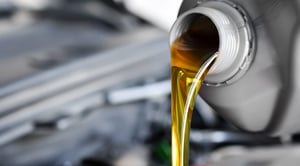 Approximately 1.3 billion gallons of waste oil are generated from the crankcases of millions of automobiles and trucks whenever the oil is changed. Approximately 200 million gallons of waste oil are not disposed of properly. Waste oil burners were developed as a way to effectively burn the waste oil and to provide alternative heating systems.
Approximately 1.3 billion gallons of waste oil are generated from the crankcases of millions of automobiles and trucks whenever the oil is changed. Approximately 200 million gallons of waste oil are not disposed of properly. Waste oil burners were developed as a way to effectively burn the waste oil and to provide alternative heating systems.
Different types of heaters are designed to burn different types of oils. Traditional waste oil burners were designed to burn #1 and #2 diesel fuels, most weights of crankcase oils, transmission fluid, and hydraulic fluid. Today’s waste oil burners can also burn used oils such as vegetable oils, recycled oils, all used motor oils, used transmission fluids, and hydraulic oils.
Waste oils vary by viscosity. Some heaters require daily monitoring and adjustment of manual controls of oil and air pressure to compensate for the inevitable changes in fuel viscosity as different types of waste oil are added to the fuel storage tank.
As with any fuel burning appliance, they can be dangerous. It’s critical for all employees to know what type of fuel sources can be used in the unit. Some units are multi-fuel compatible and some are specific to one or two types of used oils.
It’s also important that these units be installed by licensed professionals. They must be cleaned, maintained, and serviced at regular intervals according to the manufacturer’s requirements.
These suggestions will help you operate the unit safely and more efficiently:
- Always follow the manufacturer’s instructions for fuel source, maintenance, and cleaning.
- Maintenance is directly related to the purity of the oil being burned. The furnace will run cleaner and require less maintenance if the oil is filtered before it’s placed in the storage tank. (Individual components may need to be removed and cleaned at regular intervals established by the manufacturer.)
- If your unit accepts multiple types of fuel, it may require more monitoring and adjustments due to the varying viscosities of the fuel source. Higher viscosity fuels are suggested. Be sure to check the manufacturer’s recommendations or talk to your furnace dealer.
- Ash is a combustion bi-product of waste oil. Waste oil burners typically produce a high volume of ash in the combustion chamber and heat exchanger. The ash must be removed periodically as directed in the manufacturer’s instructions.
- If the unit is ducted within the facility or exhausted to the outside, a qualified person should check the condition of the duct/vent work weekly to ensure adequate air flow.
- When visually inspecting and adjusting the flame, always wear adequate eye, face, and breathing protection.
- When cleaning the unit, always wear adequate eye, face, and respiratory protection.
- Don’t breathe dust from the combustion chamber. If it’s not in a well-ventilated area, a dust mask should be worn to prevent inhalation of the dust.
- Label all your storage tanks (primary and auxiliary) as “Used Oil.”
- Don’t accept used oil from any untrusted or unknown source. Oil that may be contaminated by gasoline could cause an explosion in the unit.
If you'd like a hard copy of this technical bulletin, click here to download.
Do you have any tips or information you’d like to share? I’d love to hear them; please share them in the box below.





